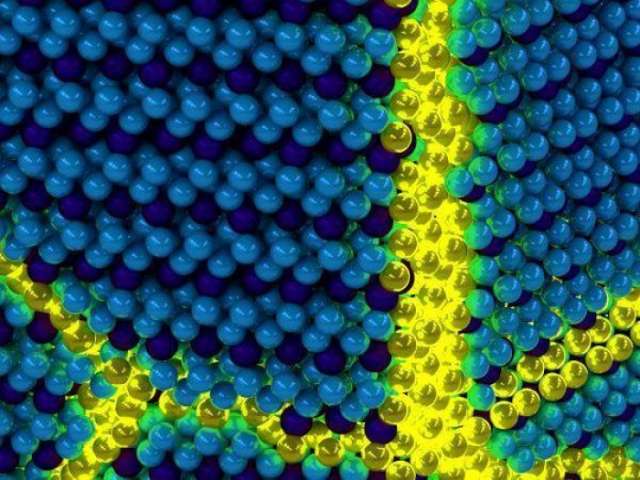It is made up of excitons – unusual particles made up of an escaped electron and the hole it has left behind in a material.
Physicists have been attempting to demonstrate the existence of this matter ever since Harvard theoretical physicist Professor Bert Halperin postulated excitonium’s existence in the 1960s.
"This result is of cosmic significance," said Professor Peter Abbamonte, a physicist at the University of Illinois at Urbana-Champaign who led the study, published in Science.
"If our understanding of quantum mechanics is correct, excitonium has to exist," he said.
"It is a bit like the Higgs boson: It's not going to lead to a better toaster, but showing that it exists is critical for validating the laws of physics as we currently know them."
Graduate student Mindy Rak explained the excitement in the lab when the research team realised what they had found.
“We were standing at a whiteboard in the lab as [collaborator Anshul Kogar] explained to me that we had just measured something that no one had seen before: a soft plasmon."
The “soft plasmon” phase is the precursor to exciton condensation.
It is the “smoking gun” required to confirm the existence of excitonium.
Different ideas of what excitonium could be like have been suggested over the years.
Some have suggested it might be a “superfluid” – a substance that flows easily with no friction – or perhaps an insulator, meaning it doesn't flow at all.
“Since the 1970s, many experimentalists have published evidence of the existence of excitonium, but their findings weren't definitive proof,” said Professor Abbamonte.
Professor Abbamonte and his colleagues know that the closest relative for their new matter is a superconductor – a metal that conducts electricity – but despite their discovery they are still not entirely sure of its properties.
The research team was able to identify excitons using a new technique they developed called momentum-resolved electron energy-loss spectroscopy, or M-EELS.
This enabled them to measure the “excitations” of the paired electrons and holes in the excitons.
In fact, the results were somewhat serendipitous as when the team set out they initially intended to simply test their newly developed M-EELS method.
While the research is of great interest for scientists investigating the mysteries of quantum mechanics, at this point it is difficult to speculate as to the potential technological applications of excitonium.
But this, said Professor Abbamonte, is besides the point.
"It took six years to develop the instruments capable of detecting it," he said.
"Perhaps the thing to be excited about is that, in our modern world of rapid-fire misinformation and fake news, there is still a place for humanity to think carefully, work patiently on hard problems, and struggle towards a deep and truthful understanding of our world."
More about: #science























-1741770194.jpg&h=190&w=280&zc=1&q=100)
























